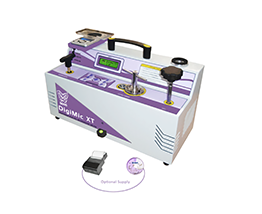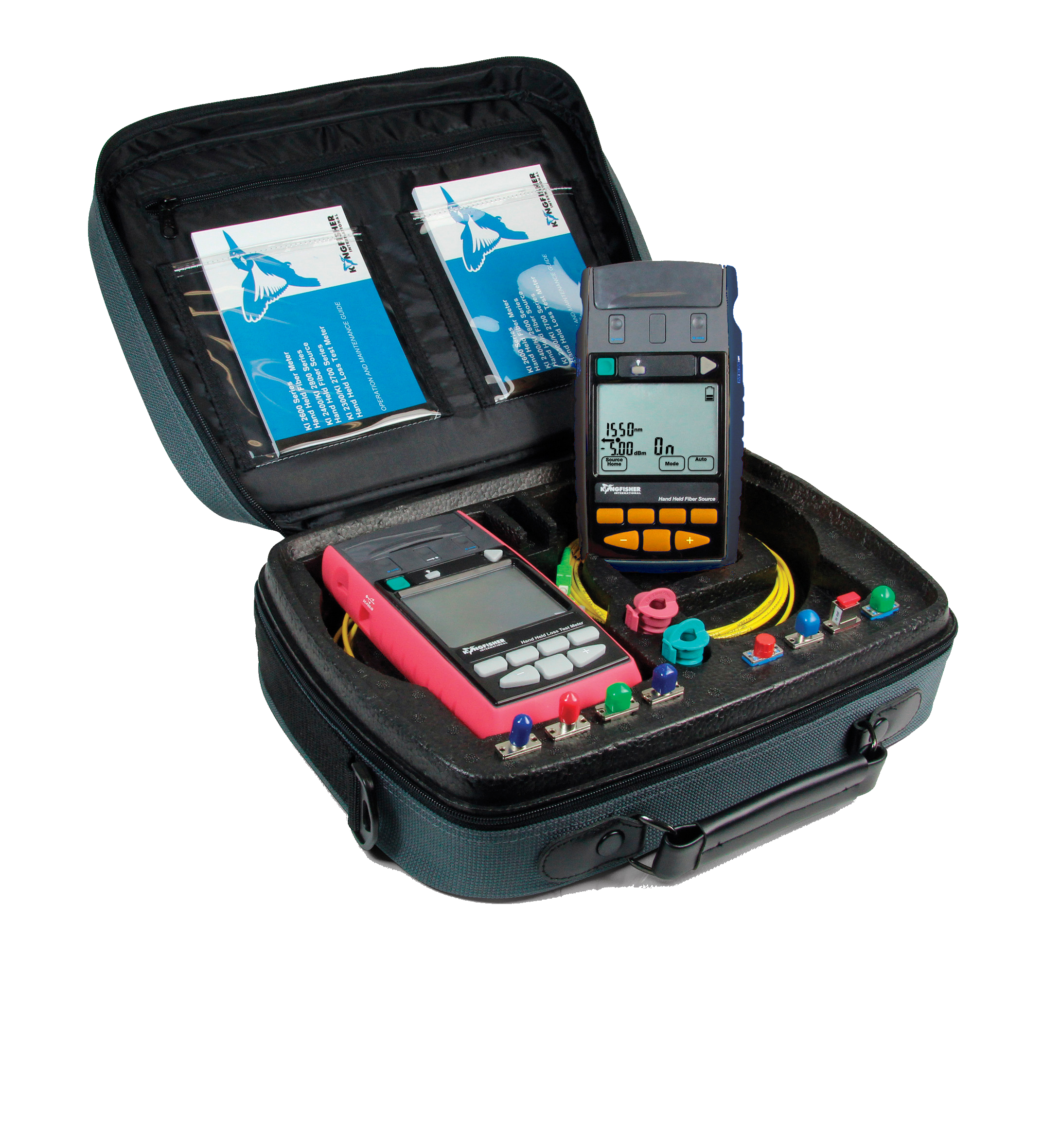How fibre testing equipment is critical for ensuring accuracy
Checking out the Impact of Robotic Vision on Modern Manufacturing Techniques and Quality Assurance
Robotic vision technology is changing the landscape of contemporary production and quality control. By incorporating advanced imaging systems and expert system, producers can attain unmatched levels of precision and effectiveness. This change not just optimizes production processes yet also addresses crucial difficulties in maintaining item requirements. As markets increasingly depend on these technologies, the effects for future production methods stay to be totally explored. What will this indicate for the affordable dynamics of the marketplace?
Comprehending Robotic Vision Modern Technology
Robotic vision modern technology serves as the foundation of automation in modern manufacturing. It includes making use of cams, sensing units, and expert system to allow robotics to interpret and reply to visual details from their setting. This modern technology permits robots to determine, find, and evaluate things, making them with the ability of performing complicated jobs such as assembly, inspection, and material handling with accuracy. The assimilation of artificial intelligence formulas further enhances the capability of robotic vision systems, enabling them to adapt to differing conditions and improve in time. By processing images and information in real-time, robot vision systems can facilitate faster decision-making and decrease errors in making processes (robotic vision). This modern technology not just boosts functional effectiveness however also assures that top quality standards are met regularly. As the manufacturing landscape proceeds to evolve, understanding the details of robot vision innovation ends up being crucial for leveraging its possible completely
Benefits of Robotic Vision in Production
Robotic vision innovation provides substantial benefits in production by improving precision and precision in tasks such as quality assurance and setting up. This enhanced degree of information warranties that items satisfy rigorous criteria, lowering waste and rework. In addition, the combination of robot vision can lead to raised manufacturing efficiency, permitting suppliers to enhance their procedures and accomplish higher outcome rates.
Boosted Precision and Accuracy
In modern manufacturing, improved precision and accuracy are crucial for maximizing production processes and ensuring item quality. Robotic vision systems make it possible for makers to carry out complex tasks with remarkable consistency. These systems make use of advanced imaging technologies to detect minute details and variants in materials, elements, and ended up products. By assessing visual data in real-time, robot vision considerably lowers human error, causing less problems and greater high quality requirements. In addition, boosted precision in dimensions and positioning facilitates much better placement in assembly processes, which is vital for complex layouts. Eventually, the integration of robotic vision not just strengthens the integrity of producing outputs however additionally promotes confidence among customers relating to item stability and performance. This precision is crucial in sectors where top quality is extremely important.
Raised Manufacturing Effectiveness

Suppliers are significantly transforming to vision systems to improve production efficiency across numerous procedures. These sophisticated systems enable real-time evaluation and tracking, significantly decreasing downtime brought on by mistakes or issues. By incorporating robotic vision, companies can automate quality assurance, permitting faster identification of issues and reducing the requirement for human treatment. This results in streamlined operations, as robots can rapidly adjust to modifications in production needs without giving up precision. Vision systems assist in far better stock monitoring by properly tracking elements and products, making certain optimal source utilization. Inevitably, the fostering of robot vision not only improves performance however additionally adds to greater output rates, minimized functional expenses, and enhanced total efficiency in the production sector.
Enhancing Quality Assurance Processes
Robotic vision technology considerably boosts high quality control processes in production by employing accuracy examination techniques. These sophisticated systems promote real-time defect detection, ensuring that products satisfy rigid top quality criteria. Therefore, makers can reduce waste and enhance general effectiveness.
Accuracy Inspection Techniques
Precision inspection strategies have actually changed quality assurance processes in production, making it possible for the discovery of min defects that conventional methods could forget. These techniques leverage advanced imaging technologies, such as high-resolution cams and laser scanning, to attain exceptional accuracy. By making use of robot vision systems, producers can automate assessment jobs, making sure regular efficiency and minimizing human error. The combination of artificial intelligence algorithms furthermore improves see post these systems, allowing them to adjust and boost gradually. In addition, precision evaluation facilitates the recognition of subtle variations in product measurements and surface coatings, which can considerably influence total product top quality. Consequently, manufacturers can apply rehabilitative actions a lot more swiftly, inevitably bring about lowered waste and boosted consumer satisfaction.
Real-Time Flaw Detection
Using sophisticated imaging technologies, real-time problem detection changes quality control procedures in manufacturing. By integrating high-resolution cams and advanced formulas, producers can quickly recognize abnormalities during manufacturing. This technology assists in instant restorative actions, decreasing waste and enhancing general efficiency. Real-time systems analyze items as they relocate along the production line, guaranteeing that flaws are discovered and resolved immediately production timetables. Additionally, the implementation of artificial intelligence enhances the precision of these systems, enabling them to adapt to brand-new issue patterns over time. Subsequently, producers gain from improved product top quality and reduced functional expenses. Eventually, real-time issue discovery not just enhances processes however additionally promotes a culture of continuous improvement in modern-day production atmospheres.
Real-Time Data Analysis and Choice Making
In the dynamic landscape of manufacturing, real-time data analysis encourages systems to make swift, informed choices. By leveraging advanced robotic vision innovations, suppliers can collect and refine huge quantities of information immediately. These systems assess aesthetic inputs to check manufacturing procedures, ensuring that any kind of why not try these out deviations from high quality requirements are spotted and addressed promptly. Subsequently, makers can maximize operations by reapportioning resources and readjusting operations based upon real-time insights.
The combination of data analytics allows for anticipating maintenance, where prospective tools failures are anticipated prior to they disrupt manufacturing. This proactive strategy reduces downtime and enhances general performance. optical measurement system. The capability to make data-driven decisions in genuine time significantly reduces waste and enhances item high quality, permitting producers to reply to market needs swiftly. Because of this, real-time data analysis not only enhances manufacturing but also fosters a culture of constant improvement in modern production settings
Obstacles in Carrying Out Robotic Vision Systems
Executing robot vision systems in making offers a range of challenges that can impede their effectiveness. One considerable barrier is the intricacy of incorporating these systems with existing machinery and operations. Manufacturers typically encounter compatibility concerns with legacy devices, bring about boosted costs and downtime. In addition, the variability in product forms, sizes, and materials can make complex the calibration of vision systems, demanding substantial training and fine-tuning.
An additional difficulty depends on refining large volumes of visual data in genuine time. High-performance computing resources are essential, which may call for more financial investment in framework. Moreover, there is a scarcity of proficient workers efficient in handling and keeping these sophisticated systems, causing possible operational ineffectiveness. Making certain the reliability and precision of robot vision systems under varying environmental conditions presents a continuous challenge. Attending to these problems is vital for optimizing the possible advantages of robotic vision in production.
Future Patterns in Robotic Vision for Manufacturing
As advancements in artificial knowledge and artificial intelligence continue to evolve, the future of robotic vision in production shows up progressively encouraging. Emerging trends show a shift in the check out this site direction of much more sophisticated imaging technologies, such as 3D vision systems and hyperspectral imaging, which will certainly enhance accuracy in quality control procedures. Combination with the Web of Points (IoT) will certainly enable real-time data evaluation, allowing robotic systems to adjust promptly to changes in the production atmosphere. In addition, the advancement of joint robotics (cobots) equipped with innovative vision abilities is expected to assist in smooth human-robot interactions, improving effectiveness and safety and security on the . In addition, the incorporation of edge computer will certainly encourage robotic vision systems to process data in your area, lowering latency and making it possible for faster decision-making. These technologies will certainly not only simplify making procedures however likewise significantly improve item top quality, positioning robotic vision as a keystone of future industrial procedures.
Often Asked Concerns
Just How Much Does Robotic Vision Innovation Usually Expense?
Robotic vision technology usually costs between $10,000 and $100,000, depending upon the complexity and specs. Variables affecting cost consist of sensor top quality, software program capacities, and assimilation needs, making it crucial to analyze particular job needs.
What Industries Are Many Impacted by Robotic Vision Advancements?
Robotic vision developments considerably impact industries such as manufacturing, automotive, electronic devices, and food processing - optical measurement system. These fields profit from boosted automation, boosted quality control, and raised performance, leading to structured operations and minimized labor expenses
Can Robotic Vision Solutions Be Integrated With Existing Equipment?
Robotic vision systems can undoubtedly be incorporated with existing machinery. This combination boosts operational effectiveness, enabling makers to leverage advanced innovations without the requirement for complete overhauls, thereby enhancing manufacturing procedures and maintaining quality criteria.

What Abilities Are Required to Operate Robotic Vision Systems?
Running robot vision systems requires efficiency in programming, an understanding of artificial intelligence, understanding of picture processing strategies, and the capacity to fix software and hardware issues, ensuring smooth integration and optimal efficiency within producing atmospheres.
Exist Any Kind Of Safety And Security Worry About Robotic Vision in Manufacturing?
